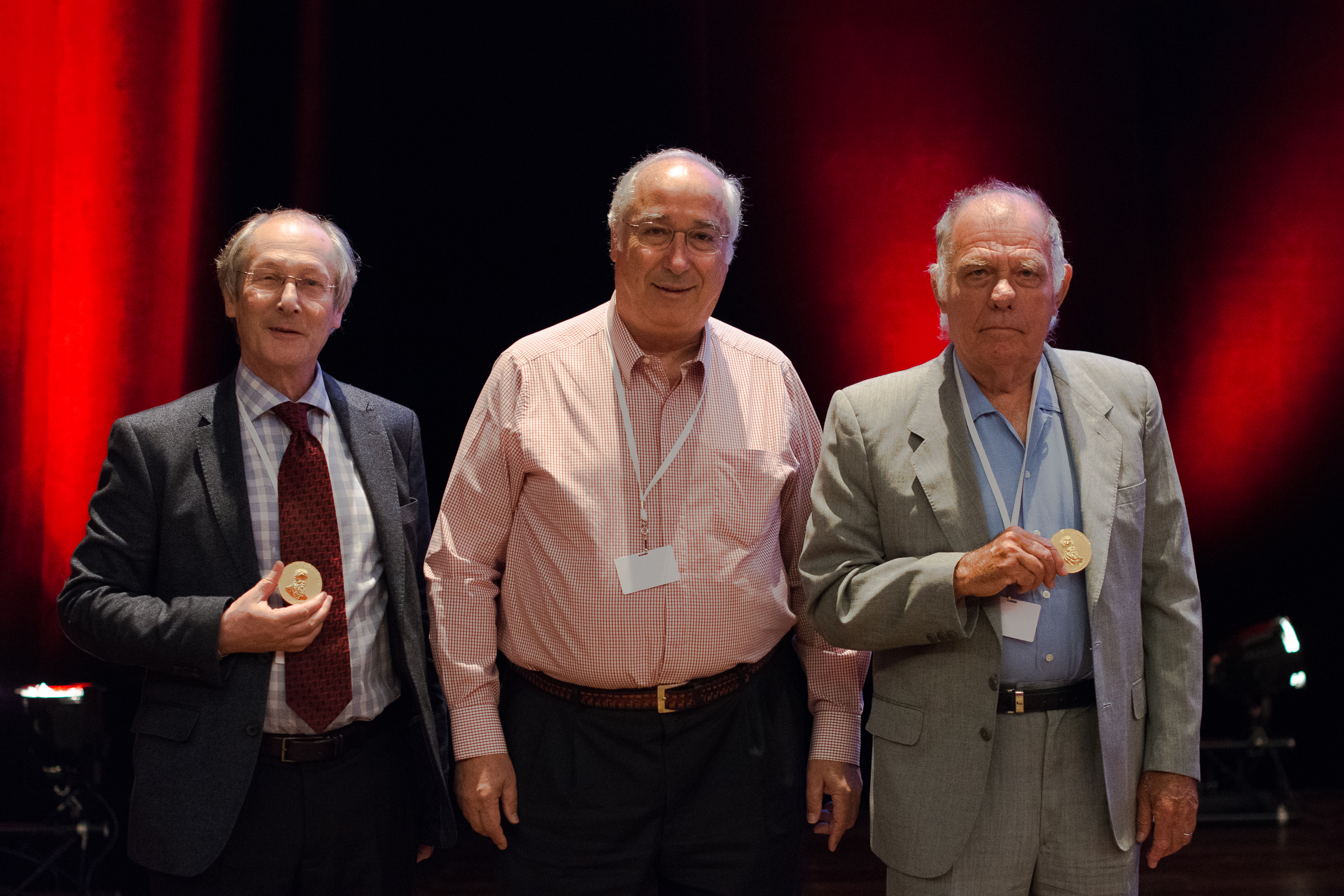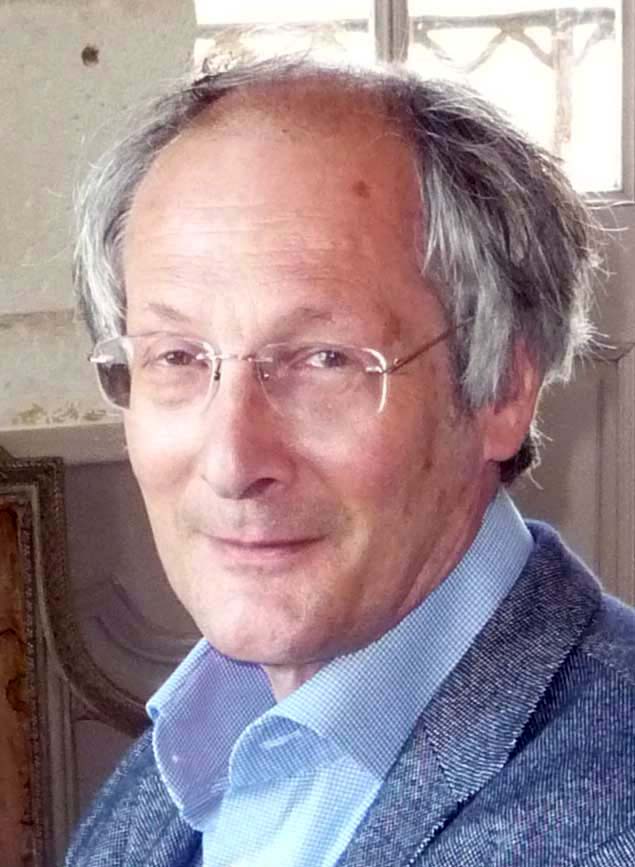
|
|
|
Boltzmann MedalThe Boltzmann Medal for 2016 has been awarded during the Boltzmann Ceremony to Daan Frenkel and Yves Pomeau.
Daan Frenkel (2016 Boltzmann medalist), Itamar Procaccia (Chairman of the IUPAP C3 commission), Yves Pomeau (2016 Boltzmann medalist).
Short Biography: Throughout his career in Amsterdam, Utrecht and Cambridge, Daan Frenkel, who started as an experimentalist, has been pushing the concepts and tools of Statistical Mechanics to their limits, in an effort to develop new methodologies and algorithms enabling the study of complex systems and phenomena through large-scale numerical simulations. Arguably the most creative and diverse “simulator” of soft matter of his generation, Frenkel is best known for a broad range of seminal contributions, starting with the determination of the complete phase diagrams of simple models of liquid crystals, using advanced Monte Carlo (MC) techniques to calculate free energies, a leitmotiv throughout much of his work. Later, motivated by the desire to understand the phase behaviour of colloids, chain molecules and their mixtures, Frenkel developed an extremely powerful extension of traditional MC sampling, namely Configurational Bias Monte Carlo. He then turned to the wide open problem of crystal nucleation, which he tackled by developing powerful new methods to determine nucleation barriers and to evaluate absolute nucleation rates. In an extension of his seminal crystal nucleation work, Frenkel is presently exploring the kinetics of DNA-mediated self-assembly of complex multi-component systems, with potential applications to the rational design of addressable nanostructures. There are many other facets to the work of Daan Frenkel which cannot be evoked in a brief presentation. His contributions to Statistical Mechanics and “smart” simulation, through landmark conceptual and methodological advances, have shed light on challenging problems as diverse as liquid crystals, nucleation kinetics, self-assembly of complex systems or granular matter.
Short Biography: Yves Pomeau is an outstanding theorists bridging disciplines from applied mathematics to statistical physics with a profound impact on the neighboring fields of turbulence and mechanics. In his early works he analyzed the long-time tails of correlation functions and the divergence of transport coefficients of two-dimensional fluids. He developed in this connection the mode-mode coupling approach that proved to be crucial for the study of dense gases. In 1973 he developed the square lattice model, which is at the origin of the famous joint work with Frisch and Hasslacher (1986) which became the basis of the whole field of fluid dynamical simulations by lattice automata and Boltzmann gas methods. These are widely used today in simulations of complex fluids and in industrial applications. His studies of low-dimensional chaos in the 1970s led him to identify, with P. Manneville, a universal scenario for the transition to chaos via intermittency. His studies of instabilities and of turbulence of spatially-extended systems inspired him (with P. Manneville) to the discovery of phase diffusion (the Pomeau-Manneville equation) and, with his student S. Zaleski, of the different mechanisms of wave number selection. This also led him to propose that the transition to turbulence in parallel flows is analogous to directed percolation. Together with younger collaborators, Pomeau proposed a solution of thelong-standing problem of the ``Saffman-Taylor finger'' and to the fundamental velocity selection problem for crystalline dendrites growing in an undercooled melt (a problem of central importance to metallurgy). Researching weak turbulence brought him to the condensation of nonlinear waves, a classical analog of Bose condensation. Analysis of the nonlinear Schrödinger equation led him in turn to predict vortex nucleation in a supersonic flow past an obstacle. This was thoroughly tested with the realization of Bose-Einstein condensation in cold atomic vapors. His interest in the focusing of nonlinear deformations brought him to elasticity and the elementary singularities of crumpled paper. Analyses of the parking problem, time reversal symmetry, solitary waves down an inclined plane, random networks of automata, capillarity, wetting and phase-field description of interfaces, vortex statistics in two-dimensional hydrodynamics etc. These are a few examples of his myriad influential contributions.
The Boltzmann Award was instituted by the Commission on Statistical Physics (C3) of the IUPAP to honor outstanding achievements in Statistical Physics. It is presented by the Commission at the STATPHYS meeting. The award consists of a glided medal (the Boltzmann Medal) with the inscription of Ludwig Boltzmann. Previous winners of the Boltzmann Medal are: 1975 K.G. Wilson |




